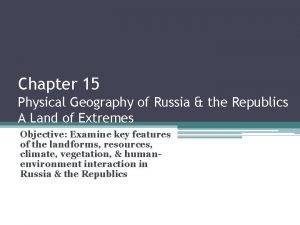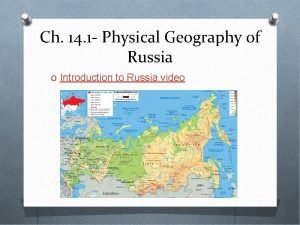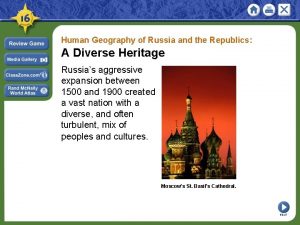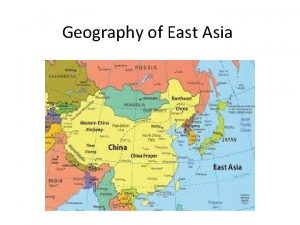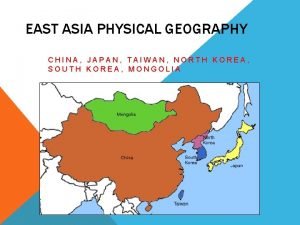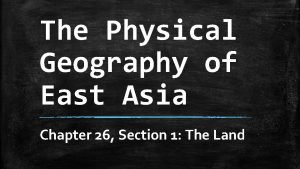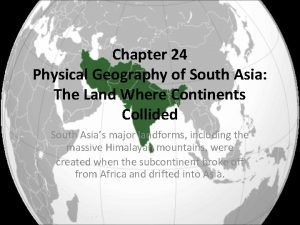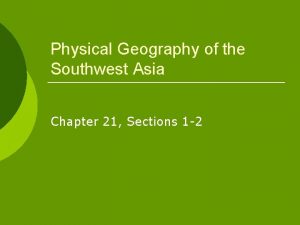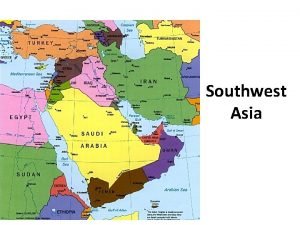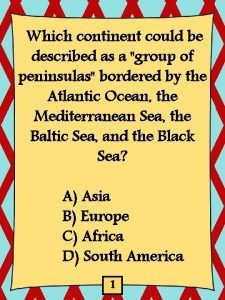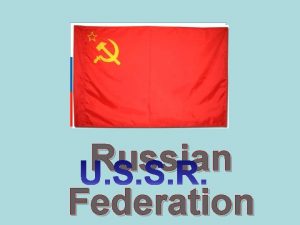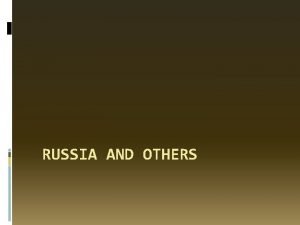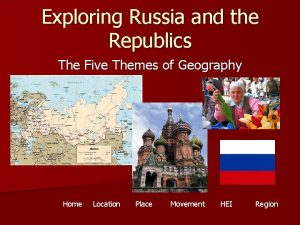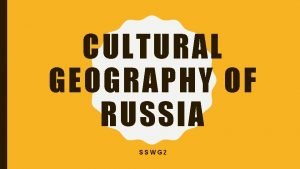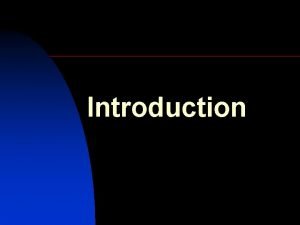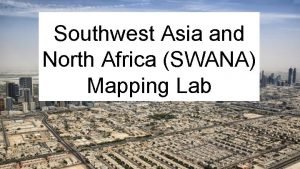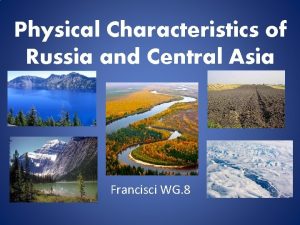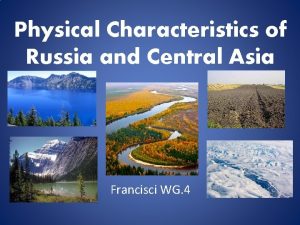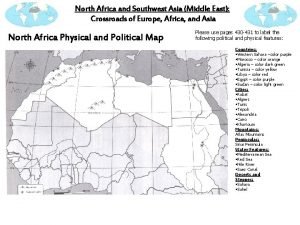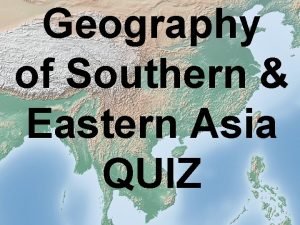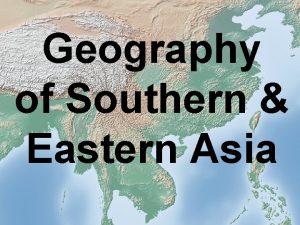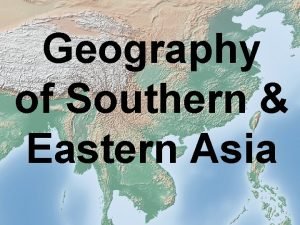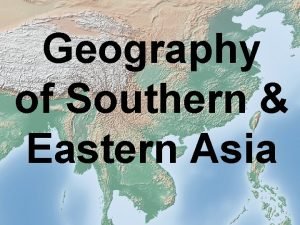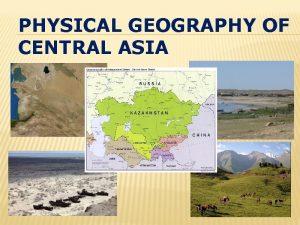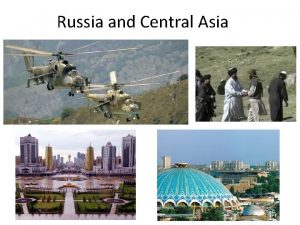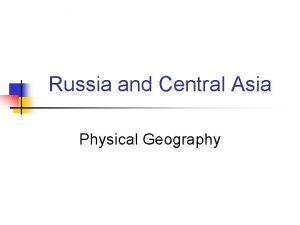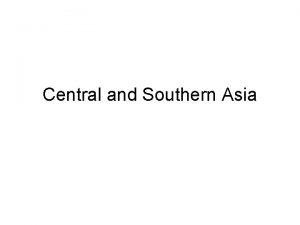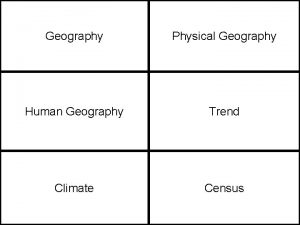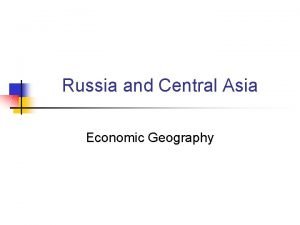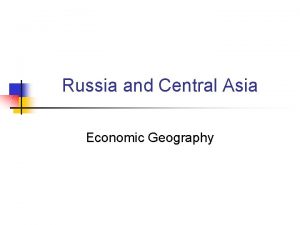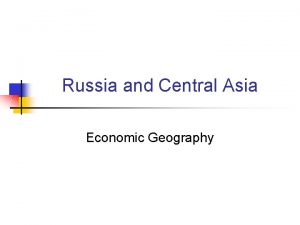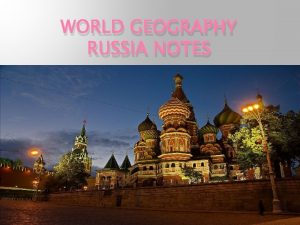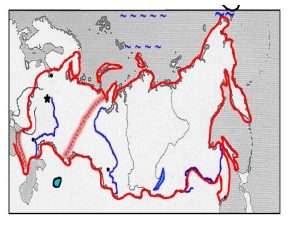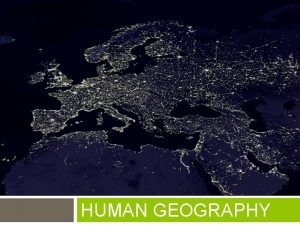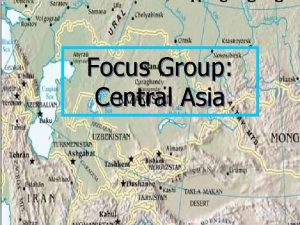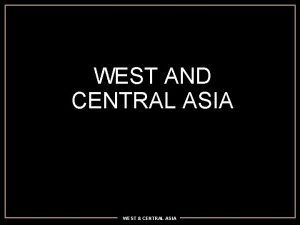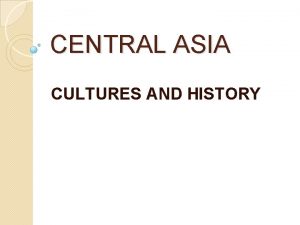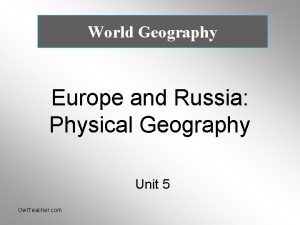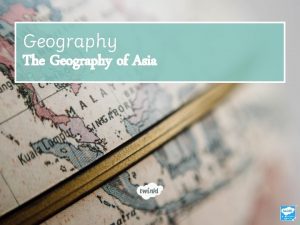Central Asia Russia Physical and Human Geography Major

































- Slides: 33

Central Asia/ Russia Physical and Human Geography

Major Landforms • • Northern European Plain Ural Mountains Caucasus Mountains Turan Plain

Northern European Plain Chernozem: black earth • Moscow, St. Petersburg, Kiev • 75% live here

Ural Mountains –the divider between Asia and Europe. –Tilts north = rivers flow to Arctic Ocean

Caucasus Mountains -Separates Black and Caspian Seas -Transcaucasia

Turan Plain Includes 2 large deserts • Kara Kum Desert • Kyzyl Kum Desert –Aral Sea

Bodies of Water • Volga River – Europe’s longest • Caspian Sea – saltwater lake, largest inland sea • Aral Sea-has lost 80% of water content

Caspian Sea • saltwater lake, largest inland sea • Oil and natural gas • sturgeon live in its waters, and the caviar produced from their eggs is a valuable commodity




Lake Bailak –Deepest lake in the world –About 1 mile deep –Holds 20% of world’s freshwater –Tourist attraction

Human Geography

Russia and the Western Republics • Russian state began in region between Baltic and Black Seas – 9 th Century, Vikings settled and adopted the customs of the local Slavic population • Settlements began to expand

Century, Mongolian invaders entered –Controlled this region until the 1500 s when Ivan the Great, Prince of Moscow, put an end to their rule • Russia began to expand to the Pacific Ocean • th 13

• Russia’s growth was rapid, but it lagged behind in science and technology – Peter the Great, tried to change this • He moved the capital to St. Petersburg – Russia did not begin to industrialize until the end of the 1800 s

Trans- Siberian Railroad • • Czar Alexander III. 5, 700 miles 10 years to build This was the first major step towards connecting all of Russia together physically and economically.

Rise and Fall of the Soviet Union • Russian Revolution (1917): ended rule of the czars – Communist Party, led by Lenin, took control

• By 1922, the Union of Soviet Socialist Republics (USSR) was formed • Stalin had taken over by WWII

Building a Command Economy • Inspired by Karl Marx • Soviet leaders adopted a command economy. • Soviet government created collective farms

–After the war, Stalin installed pro-Soviet governments in parts of Eastern Europe –The Cold War soon began between the U. S. and USSR and continued until the 1980 s.

• By the 1980 s, Mikhail Gorbachev began to give more freedom to the Soviet people –This led to the collapse of the Soviet Union in 1991 • The region was divided into 15 independent republics

Area of Conflicts After the Fall of USSR • Chechnya – Remained part of Russia – Russia invaded in 1994 and 1999 – 2009 Russia pulled out • Georgia – In a conflict with the Ossetian people • Armenia and Azerbaijan – Fought of the Nagorno-Karabakh

Transcaucasia • Consists of Armenia, Azerbaijan and Georgia • Used as a migration route between Europe and Asia –This has led to a variety of cultures

• Transcaucasia has a history of outside control –The czars of Russia entered in the 1700 s –Transcaucasian countries enjoyed some independence during the Russian Revolution until the Soviet Red Army retuned in the 1920 s

Central Asia • Consists of Kazakhstan, Kyrgyzstan, Tajikistan, Turkmenistan, Uzbekistan

History of Central Asia • The Great Game – Competition between Great Britain and Russia over Central Asia – By the end of the 19 th century, Russia won control of Central Asia – In 1920 s the USSR took control and governed until 1991

– 4, 000 mile journey from China to the Mediterranean Sea • Gold, Silver, Ivory • Wine, Spices, Porcelain – Spreading of ideas, technology, and religion Silk Road

Steps Toward Capitalism • Privatization – Government-owned businesses to individuals and private companies – Economic crash in 1998 – 40% of Russians live below the poverty line • Distance Decay – Long distances between places is an obstacle facing economic reformers.

• Russia covers 11 time zones

Environmental Concerns • • Nuclear testing Lack of federal regulations Nuclear testing Nuclear power plants

Chernobyl Ukraine April 26, 1986 everyone living within the 30 kilometer radius was evacuated. The last reactor was not shut down until December 2000.

 Chapter 15 physical geography of russia and the republics
Chapter 15 physical geography of russia and the republics Reteaching activity 14 physical geography of russia
Reteaching activity 14 physical geography of russia Kums definition geography
Kums definition geography Human geography of russia
Human geography of russia Asia geography
Asia geography Taiwan physical geography
Taiwan physical geography Chapter 27 physical geography of east asia
Chapter 27 physical geography of east asia Lesson 1 physical geography of southeast asia
Lesson 1 physical geography of southeast asia Physical geography of east asia
Physical geography of east asia Climate zones of asia
Climate zones of asia Map of southwest asia
Map of southwest asia Chapter 21 physical geography of southwest asia
Chapter 21 physical geography of southwest asia Chapter 22 human geography of southwest asia
Chapter 22 human geography of southwest asia Chapter 25 human geography of south asia
Chapter 25 human geography of south asia Which letter represents the pyrenees mountains on the map
Which letter represents the pyrenees mountains on the map Russia continent
Russia continent Ap human geography frq format
Ap human geography frq format 5 themes of geography ap human geography
5 themes of geography ap human geography Ap human geography political geography test
Ap human geography political geography test Central place theory definition
Central place theory definition Human development index definition ap human geography
Human development index definition ap human geography Landforms in moscow
Landforms in moscow Russia 5 themes of geography
Russia 5 themes of geography Vocabulary activity 15 the cultural geography of russia
Vocabulary activity 15 the cultural geography of russia Russia 5 themes of geography
Russia 5 themes of geography River in central russia
River in central russia Physical map of swana
Physical map of swana Russia physical characteristics
Russia physical characteristics Russia physical characteristics
Russia physical characteristics Physical map of north africa and southwest asia
Physical map of north africa and southwest asia Southern and eastern asia physical features answer key
Southern and eastern asia physical features answer key Physical features of southern and eastern asia
Physical features of southern and eastern asia Southern & eastern asia physical features map answer key
Southern & eastern asia physical features map answer key Southern and eastern asia physical features answer key
Southern and eastern asia physical features answer key
